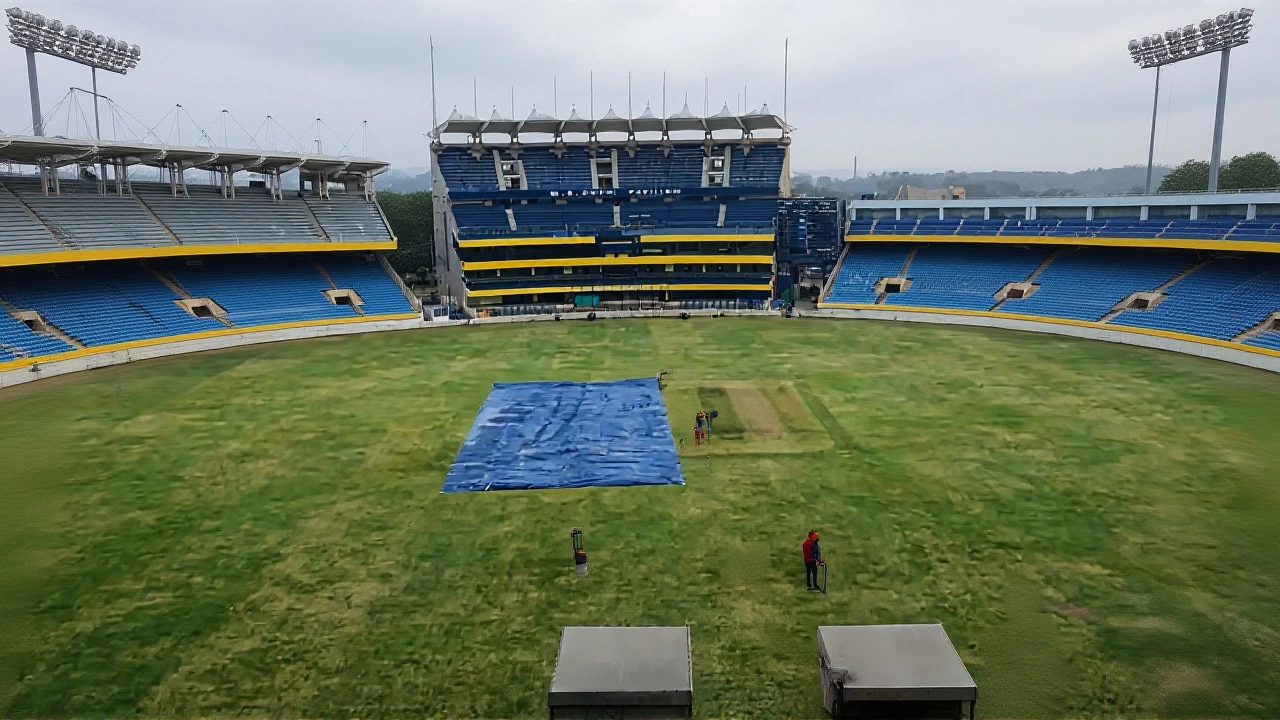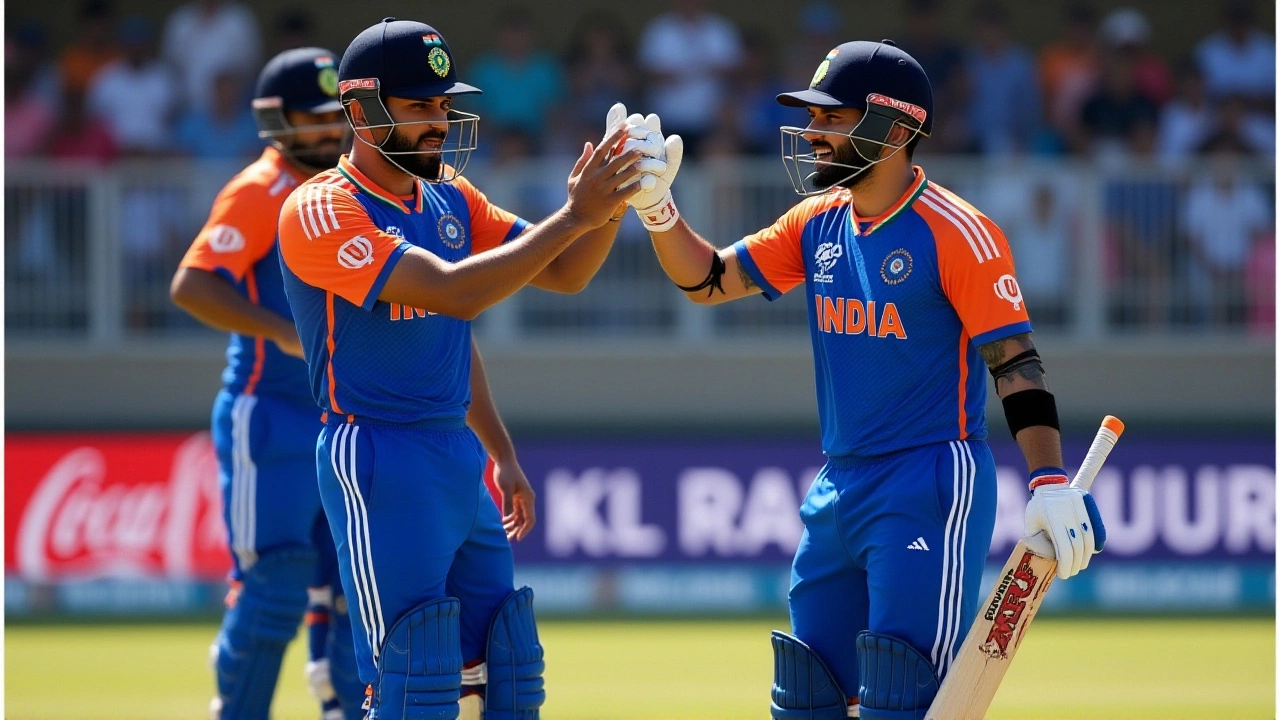When the BCCI announced KL Rahul as India’s stand-in captain for the upcoming ODI series against South Africa on November 23, 2025, it wasn’t just a lineup change—it was a leadership reset under pressure. Shubman Gill, the freshly appointed ODI captain, was sidelined after a neck injury during the first Test at Eden Gardens in Kolkata on November 17. Then came the twist: vice-captain Shreyas Iyer, injured during the Australia series in October, was also out. Suddenly, the burden fell on KL Rahul, 33, a seasoned hand with 12 previous captaincy stints and a quiet intensity that doesn’t need loud speeches to command respect.
Leadership Vacuum and the Rise of Rahul
The injury to Gill—confirmed by Asian News International on November 22—wasn’t just a physical setback; it was a strategic blow. Gill had been the future of India’s white-ball leadership, a calm, consistent top-order anchor. Iyer’s absence, stemming from a hamstring strain during the third ODI against Australia at Wankhede Stadium on October 24, left a gaping hole in the middle order and the captaincy chain. With no clear heir apparent, the BCCI turned to Rahul, who last led India in ODIs in 2023. His record? Eight wins, four losses in 12 matches. Against South Africa specifically? Two wins, four losses—including a 3-0 thrashing in January 2022 and a hard-fought 2-1 comeback win later that year.It’s not just about stats. Rahul’s presence brings stability. He’s been through the wars: rehabbing injuries, handling criticism after losses, and still showing up with a bat in hand. At 33, he’s no longer the young firebrand of 2022. He’s the steady hand in a storm.
Squad Shake-Up: New Faces, Old Giants
The squad announcement was a mix of youth revival and veteran return. Ruturaj Gaikwad, 28, and Tilak Varma, 22, were recalled to plug the middle-order gap left by Iyer. Gaikwad, who last played ODIs in 2023, came back strong with India A—scoring 117, 68, and a 25* not out against South Africa A in a 2-1 series win. Tilak, meanwhile, has been on the fringes since 2023, and this is his chance to prove he belongs at the top level.And then there’s the return of the giants. Rohit Sharma, 38, and Virat Kohli, 37, are back in home ODIs after stepping away from white-ball cricket earlier this year. Their presence isn’t just about runs—it’s about aura. They’ve been training, watching, waiting. Now, they’re back to mentor, anchor, and, yes, maybe even set the tone for the 2026 T20 World Cup.
Yashasvi Jaiswal, 23, is poised to open alongside Rohit. The young left-hander has been on fire in domestic cricket and IPL, and this series is his audition for a permanent spot. Meanwhile, Rishabh Pant, 28, is in the squad—but not guaranteed to play. He hasn’t featured in an ODI since Sri Lanka in 2024, and with Rahul and Dhruv Jurel, 24, also keeping, the competition is fierce. Pant’s inclusion is a statement: the BCCI isn’t closing the door on him, but they’re not handing him the gloves either.

Rest, Rotation, and the Road to 2026
One name conspicuously missing? Jasprit Bumrah, 31. The BCCI confirmed he’s being rested. Not injured—rested. That’s a strategic call. With five T20Is against South Africa immediately following this ODI series, and the T20 World Cup looming in India next year, managing workload is everything. Bumrah’s fitness is non-negotiable. This isn’t neglect—it’s long-term planning.The series schedule is tight: three matches across three cities—Ranchi on November 30, Raipur on December 3, and Visakhapatnam on December 6. Each venue has its own pitch character: Ranchi’s slow, turning track; Raipur’s balanced surface; Visakhapatnam’s batting paradise. This isn’t just about winning—it’s about testing adaptability.
Why This Series Matters More Than It Looks
On paper, it’s three ODIs against South Africa. But behind the scenes, it’s a rehearsal for the T20 World Cup. Both teams are using this as a dress rehearsal. South Africa, under Marco Jansen’s emerging leadership, are testing their spin options and death-over bowlers. India? They’re figuring out who can bat at 5 under pressure, who can hold the middle, who can lead when the lights are brightest.And then there’s the emotional layer. For Rahul, it’s redemption. After the 3-0 loss in South Africa and the pressure of replacing Virat Kohli as captain in 2022, this is his chance to prove he’s not just a backup—he’s a leader who can rise when the team needs him most. For Gaikwad and Tilak, it’s a career-defining moment. For Rohit and Kohli, it’s a farewell tour they didn’t plan but now own.

What’s Next?
The five-match T20I series starts December 9, just three days after the final ODI. That’s a brutal turnaround. Players will fly from Visakhapatnam to Delhi, then to Mumbai, with barely a day to rest. The BCCI’s medical staff will be under scrutiny. Who cracks under the load? Who thrives? That’s the real story.And then? The T20 World Cup. India’s home turf. A billion eyes watching. The players chosen in this ODI series won’t just be selected for these matches—they’ll be selected for history.
Frequently Asked Questions
Why was KL Rahul chosen over other vice-captains or senior players?
With both Shubman Gill and Shreyas Iyer injured, Rahul was the only senior player with recent captaincy experience in ODIs. He’s led 12 matches with an 8-4 record, understands the pressure, and has the batting depth to stabilize the innings. Players like Suryakumar Yadav and Hardik Pandya were considered, but neither has captained in ODIs. Rahul’s calm demeanor and tactical awareness made him the safest, most experienced choice.
How does this affect India’s chances in the 2026 T20 World Cup?
This series is a critical trial run for leadership and depth. Rahul’s captaincy will be closely watched, but more importantly, how Gaikwad, Tilak, and Jaiswal handle high-pressure situations will determine India’s middle-order resilience. The return of Kohli and Rohit adds experience, but their fitness over a packed schedule is the real concern. If these players gel quickly, India enters the World Cup as favorites.
What’s the significance of Bumrah being rested?
Bumrah’s rest is a sign of long-term planning, not neglect. With five T20Is immediately after the ODIs, and the World Cup in June 2026, the BCCI is prioritizing his longevity. He’s played over 80 international matches in the last four years. Resting him now avoids burnout and reduces injury risk—critical for a bowler who relies on precision, not pace. His return in the T20Is will be timed for peak performance.
Is Rishabh Pant likely to play in the ODI series?
Unlikely as a starter. With KL Rahul as captain and wicketkeeper, and Dhruv Jurel as the backup keeper, Pant’s role is unclear. He’s been out of ODIs since 2024, and his recent form in domestic cricket hasn’t been dominant. His inclusion is a safety net—if Rahul or Jurel gets injured, Pant steps in. But he’s not the first choice. This series isn’t about rehabbing Pant—it’s about building for the future.
What’s the historical context of India’s ODI captaincy changes?
India has a pattern of sudden captaincy shifts after injuries or poor results. After Dhoni’s retirement, Kohli took over. When Kohli stepped back, Gill was promoted. Now, with Gill out, Rahul steps in—marking the third leadership change in 18 months. This instability reflects the BCCI’s eagerness to test young leaders, but also reveals a lack of a clear succession plan. Rahul’s appointment is a temporary fix, not a long-term solution.
How do South Africa’s preparations compare to India’s?
South Africa is also in transition. With Temba Bavuma sidelined, Marco Jansen leads a young side testing spin options and death-bowling combos. Their recent 2-1 win over India A in 2023 gave them confidence, but they lack India’s depth. Their focus is on building cohesion ahead of the T20 World Cup. India’s home advantage and experience give them the edge, but South Africa’s aggressive style could surprise if their batters fire.
